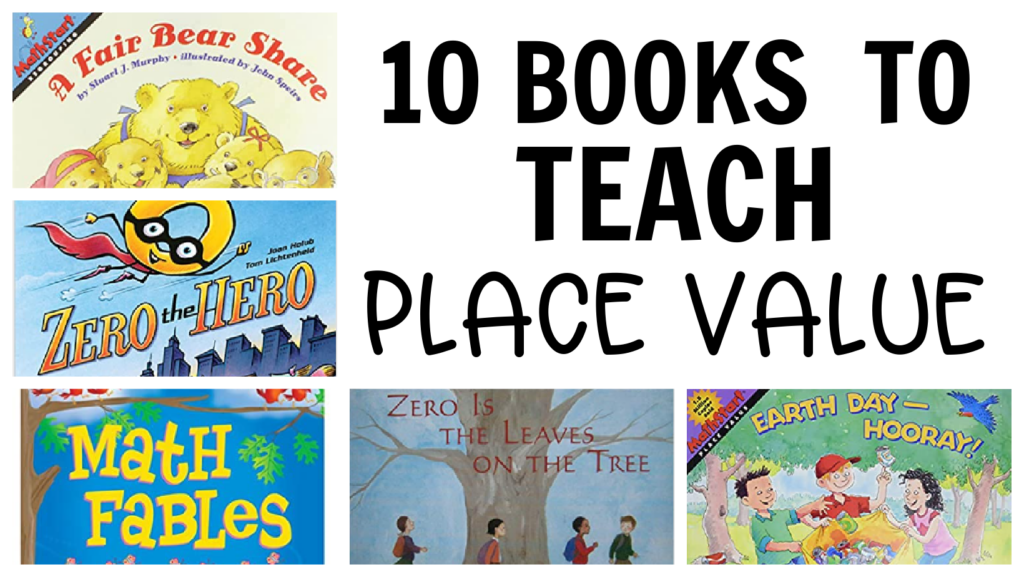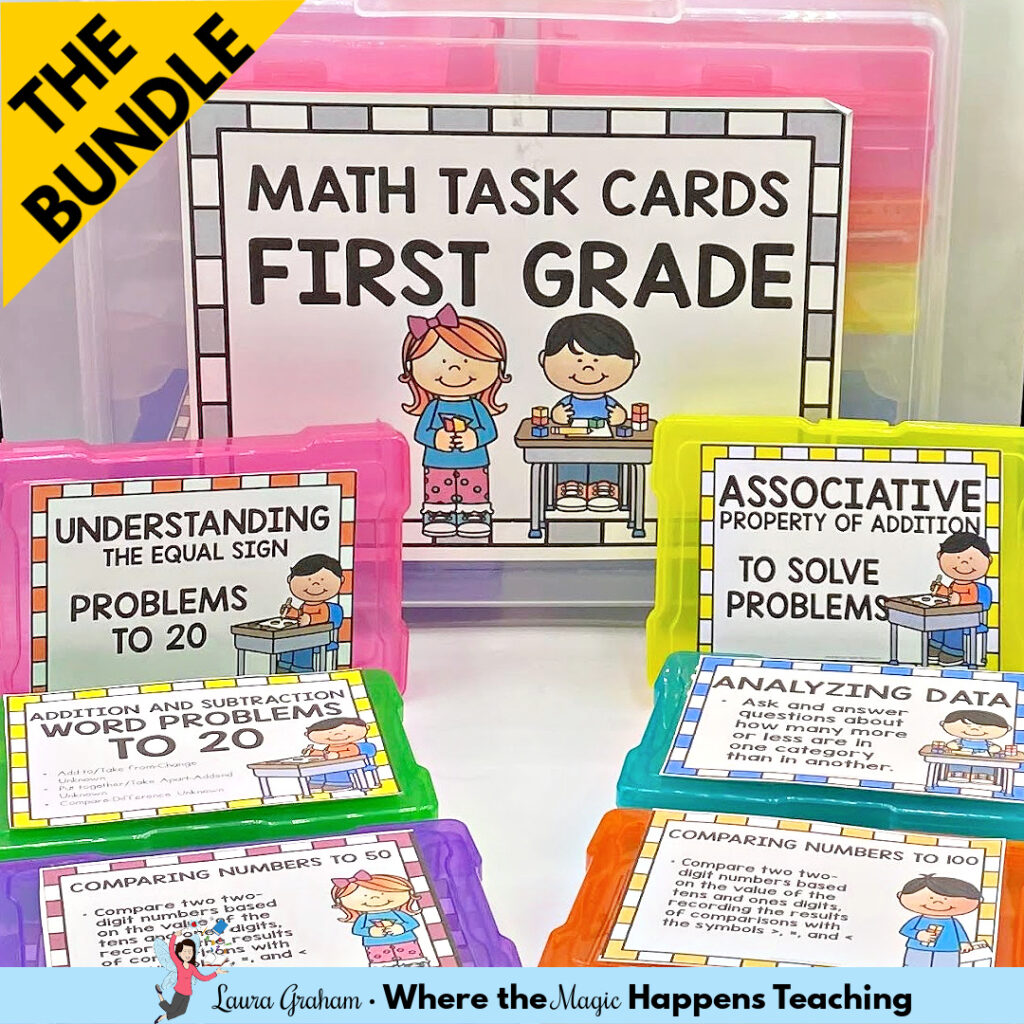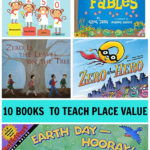Numeracy and number sense can be challenging concepts for children to understand especially when it is in written form…I especially love to use books to teach place value. The key is to have the numbers lined up in columns but that is much easier for the children who attend to details of how things look than for others. Place value charts and place value blocks all help to provide children with a way to see how place value works but sharing books that explain place value are also very helpful. Here are some books to teach place value that I have used quite successfully with second grade children (which is when place value if often explored):

David Adler has a way of explaining curriculum concepts in a way that makes sense to children!
You had better not monkey around when it comes to place value. The monkeys in this book can tell you why! As they bake the biggest banana cupcake ever, they need to get the amounts in the recipe correct. There’s a big difference between 216 eggs and 621 eggs. Place value is the key to keeping the numbers straight. Using humorous art, easy-to-follow charts and clear explanations, this book presents the basic facts about place value while inserting some amusing monkey business. This is by far my favorite picture book to teach place value.
Join Zero on his math adventure as he discovers his place through multiplication. Zero is lonely in Digitaria. He can’t play Addemup with the other numbers because he has nothing to add. All the other numbers seem to belong, and they all have a place, but when zero discovers multiplication, he thinks he might have a place there. He sets out to find King Multiplus who also is curious about what will happen when Zero gets thrown in the mix. With math and word play A Place for Zero is the perfect introduction to multiplication and number placement. A playful way to make math less intimidating and more fun to explore.
What’s the value of zero and why is it so great anyways? Zero the Hero is a fun story about the number zero. Each number in the story is a character. The other numbers in the story aren’t a big fan of the number zero. He doesn’t add anything in addition. He’s of no use in division. And don’t even ask what he does to you in multiplication. But Zero knows he’s worth a lot, and when the other numbers get into trouble, he swoops in to prove that his talents are innumerable.
Math Fables: Lessons That Count is an amazing resource for teaching children their math skills, in particular their place value concepts. Through winsome “fables” about concepts that are relevant to the very youngest math learners: sharing, teamwork, etc. Greg encourages kids to see the basics of addition and subtraction in entirely new ways. Fresh, fun, and most of all, inspiring, this book is perfect for launching young readers on the road to math success! This is a MOST perfect book to teach place value.
Children will love the story and the funny illustrations in this book. You will love how the story and pictures make understanding comparisons a breeze—as well as the concrete examples of how math works. I especially like the activities for teachers to do with kids to extend math into their daily lives.
Shooting hoops or mastering base 10 numeration? For 10-year-old Doogie, his heart is firmly planted on the basketball court. Even in class, he is daydreaming about his career in the NBA. Unfortunately, he has a rude awakening when he attempts to purchase a leather basketball and finds his understanding of place value is woefully lacking. Fortunately for Doogie, he is in for a mind-bending intervention from an intergalactic super-hero, Tenacious Ten, who quickly illustrates the wonders of the base 10 system and the miracle power of zeroes and the decimal point. This is a great book for third graders to explore and a perfect book to teach place value!
Join Sir Cumference (Children who enjoy play on words will love this name!) and the gang for more wordplay, puns, and problem solving in the clever math adventure about place-value and counting by tens. Sir Cumference and Lady Di planned a surprise birthday party for King Arthur, but they didn’t expect so many guests to show up. How many lunches will they need? And with more guests arriving by the minute, what about dinner? Sir Cumference and Lady Di count guests by tens, hundreds, and even thousands to help young readers learn place-value. Fans will love this new installment of the Sir Cumference series that makes math fun and accessible for all.
From a single pea on a plate to a quadrillion peas that cover an entire town, the numbers just get
bigger and bigger, in a concept book about the unlimited possibilities of counting. This is a book
that draws kids in with it’s fun comic book like graphics. This book looks at big numbers and
compares them. It also provides various representations of the large numbers such as
using words and exponents. I also like how he explains large numbers in terms of place value.
(For example, 1 billion is a thousand million).
It’s easy to count three of something– just add them up. But how do you count zero, a number that is best defined by what it’s not? Can you see it? Can you hear it? Can you feel it? Not when nothing is there! What is the difference between zero meaning nothing and zero as a place holder in math? This important math concept is beautifully explored in a way that will inspire children to find zero everywhere–from the branches of a tree by day to the vast, starry sky by night.
Earth Day—Hooray! is a perfect book to teach place value to second, third, and fourth graders. Earth Day is on the way, and Ryan, Luke, and Carly have a plan. If they manage to collect and recycle 5,000 aluminum cans, they can make enough money to buy some beautiful flowers for nearby Gilroy Park. Can they do it? Counting the cans gives Ryan, Luke, and Carly—along with readers—a lesson in place value. And facts about recycling throughout the story will help readers understand how important it is to take care of the earth. This can lead you to a class project to make place value very realistic as a concept.

















Leave a Reply